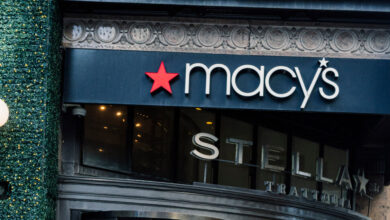The Demise of Google’s Cached Links: A Blow to SEO Professionals and Internet Historians

Google Search‘s cached links were once a handy way for users to access websites that were temporarily down or had undergone revisions. SEO professionals heavily relied on these cached links to track their competitors’ website updates. However, Google has recently discontinued this feature, leaving SEO professionals and internet historians in dismay. Danny Sullivan, Google’s Search Liaison, confirmed that cached links are now part of Google’s retired features and services. This article explores the reasons behind this decision and its implications for users and professionals alike.
The Mysterious Disappearance
The removal of cached links by Google had been rumored for some time, gaining traction when Barry Schwartz from the Search Engine Roundtable reported that cached links were being removed entirely. Users noticed the vanishing act when cached links unexpectedly disappeared from the “About this result” panel, found in the three-button menu beside search results. In response to Schwartz’s post, Danny Sullivan officially confirmed the removal of this longstanding feature. According to Sullivan, the cache function was initially designed to help people access web pages during periods of unreliable internet connections, serving as a solution to one of the earliest challenges of the internet era.
Hey, catching up. Yes, it’s been removed. I know, it’s sad. I’m sad too. It’s one of our oldest features. But it was meant for helping people access pages when way back, you often couldn’t depend on a page loading. These days, things have greatly improved. So, it was decided to…
— Google SearchLiaison (@searchliaison) February 1, 2024
Google’s Cache Function in Detail
Google’s cache function essentially acted as a backup of the entire web. Users, including journalists, frequently utilized cached links to track modifications or deletions made by companies to their websites. Additionally, users discovered that cached links were an effective workaround for paywalls or to access blocked websites in certain regions through a budget-friendly virtual private network (VPN). Accessing a web page’s cache was effortless, with a “Cached” button conveniently placed at the bottom of the “About this result” box in search results. In fact, tech-savvy users could also employ the “cache:” trick before a URL in the search bar to instantly access Google’s cached version. Unfortunately, this trick is also being phased out, as clarified by Sullivan.
The Wayback Machine as a Solution
While the removal of cached links can pose challenges for users, there is still a potential solution. The Internet Archive’s Wayback Machine preserves old versions of websites, although its operational sustainability remains an ongoing concern. Sullivan raised the possibility of collaborating with the Internet Archive, envisioning a future where cached links redirect users to the Wayback Machine’s snapshot of the desired webpage. However, this remains speculative at this point.
Cost-Cutting Measure
Although Google’s cache function served as a valuable resource, it is unlikely that Google generated significant revenue from users accessing cached results. While Google’s web crawler continuously sought fresh online content, it also stored copies of every webpage it encountered, resulting in an enormous cache of data—an essentially comprehensive backup of the entire internet. In the pursuit of cost efficiency, it becomes logical for Google to clear out excess data cache and free up valuable resources.
The Importance of the Cached Links Feature
Despite its recent discontinuation, the cached feature provided searchers with a valuable safety net during controversies. In instances of content errors or the need for proof of deleted social media posts, the cached links served as reliable evidence. The removal of this feature leaves users without a readily available backup option. This absence raises concerns regarding accessibility, accountability, and the preservation of digital history.
The elimination of Google’s cached links feature has significantly impacted SEO professionals, internet historians, and search users globally. While the cache function initially aimed to solve connectivity issues, it evolved into a multifaceted tool, assisting journalists, website trackers, and others trying to circumvent limitations. While the removal of cached links represents a cost-cutting measure for Google, it also raises concerns about the accessibility and preservation of crucial online content. The future might see the collaboration between Google and the Internet Archive’s Wayback Machine, offering users an alternative method to access archived webpages. Nevertheless, the loss of cached links marks a significant shift in Google’s approach to search and highlights the need for alternative solutions to retain the historical integrity of the digital landscape.





